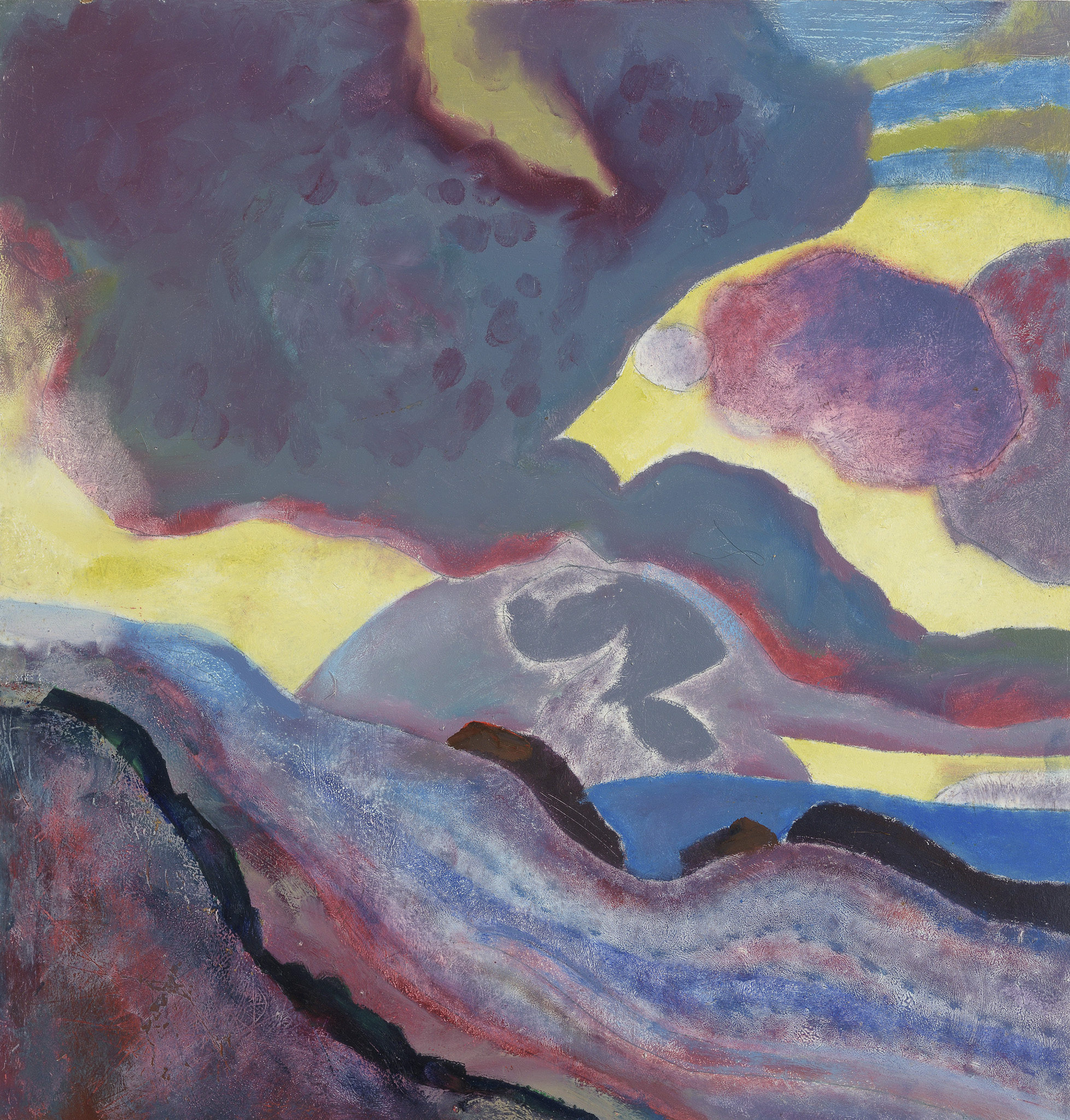[ad_1]

Conversations between
Kurt Schwitters, Derek Hyatt, and John Ruskin
13th November 2024 – 2nd March 2025
Brantwood, East of Lake Coniston, Cumbria, UK
Emissaries of the Land is an exhibition of works by Kurt Schwitters (1887 – 1948) and Derek Hyatt (1931 – 2015), curated by Michael Richardson and first exhibited at Art Space Gallery, London in 2023. The ‘conversation’ between these two artists takes an unexpected twist, as it now comes to the former home of John Ruskin, who joins the meeting.
Schwitters occupies a secure place in the history of the early 20th Century avant garde. His collages created from discarded everyday scraps of life on the streets of Hanover in the inter-war years, his links to DADA and his own concept of Merz, placed him high on the Nazi list of so-called ‘degenerate’ art. His subsequent flight to safety through Norway and Britain, later enshrined him as a heroic refugee of an earlier era, somehow inexplicably marooned in the provincial backwaters of wartime Ambleside.
Schwitters’ later career took him into places where a predominantly urban-minded art world found – and still finds –it hard to follow. He went to nature. In Ambleside Schwitters created a series of exquisite abstract painted constructions which draw from the landscapes around him. It took a young Derek Hyatt to see this. As a student at the Royal College of Art he reviewed a Schwitters’ show ten years after the latter’s death. Hyatt drew the comparison between Schwitters and English landscape artist, Paul Nash. The Schwitters show was an inspiration for Hyatt, who went on to become a uniquely individual interpreter of landscape, in particular the north Yorkshire Moors.
The exhibition at Brantwood allows Hyatt and Schwitters to come together physically. The chemistry is powerful. Each makes the other more telling. Hyatt releases Schwitters from his historical straitjacket.
The seldom seen works on show can be experienced in an entirely different context. Schwitters reveals the playful Hyatt as an artist of genuine strength, a sensitive, almost mystical, painter, above all a true master of colour.
The exhibition takes place in the home of a third, well acknowledged, artist of landscape, John Ruskin. The sharp detail of Ruskin’s own work as an artist often veils its deeper sensitivity and thoughtful abstraction. With his two house guests alongside him, Ruskin thus connects directly with the generations who have taken him forward in radical ways, giving Hyatt and Schwitters fresh presence, and drawing from them a similar power.
“The current exhibition at Brantwood allows Hyatt and Schwitters to come together physically. The chemistry is powerful. Each makes the other more telling. Hyatt releases Schwitters from his historical strait jacket. He is both prehistoric and in the moment, creator of a set of verbs to which we bring our own nouns. Schwitters reveals the playful Hyatt as an artist of genuine strength, a sensitive, almost mystical, painter, above all a true master of colour.”
Howard Hull, Director of Brantwood“Schwitters and Hyatt are heirs of that great legacy encompassing Wordsworth, Blake, Turner, Ruskin, Palmer and Nash, who all strove to reconcile the potential of a semi-abstract language, freed from time and place, with the desire to also reveal the mysterious treasures of the natural world. They understood that nature is not a static pattern of separate elements, but a forcefield of dynamic interconnections in ceaseless flux, and that the beauty and truth of a painting is proved in its ability to convey Ruskin’s “perpetual variation.”
Their prescient experiments with paint and the found object, the use of the vernacular and the unadorned, where associative thinking supplants linear formation, represents a radical exploration of the innate value of the natural environment. In this there is a parallel with our current understanding of, and conflicting responses towards, not just modernity, but also our sense of place, history, memory, questions of national identity and notions of ‘otherness’. They encourage us to pay closer attention to our own more immediate environment, to know it with new eyes, to celebrate and cherish it, and to trust in the wondrous inherent in the commonplace.
Art, in all its myriad forms, can enable us to view and think about the world and our place in it differently. It can make us feel and understand it with a lucidity sometimes lost in the deluge of information, mis-information and dis-information, that bombards us daily. It can inspire a sense of wonder and connection with nature that is full of hope. In these increasingly uncertain times, hope, as revealed to Patrick Kavanagh as “a star-lovely art / In a dark sod”, is something we need to find much more of.”
Russell Mills, excerpts from his talk given at the opening of the exhibition.
[ad_2]
Source link




